(Image credit:
Getty Images
)
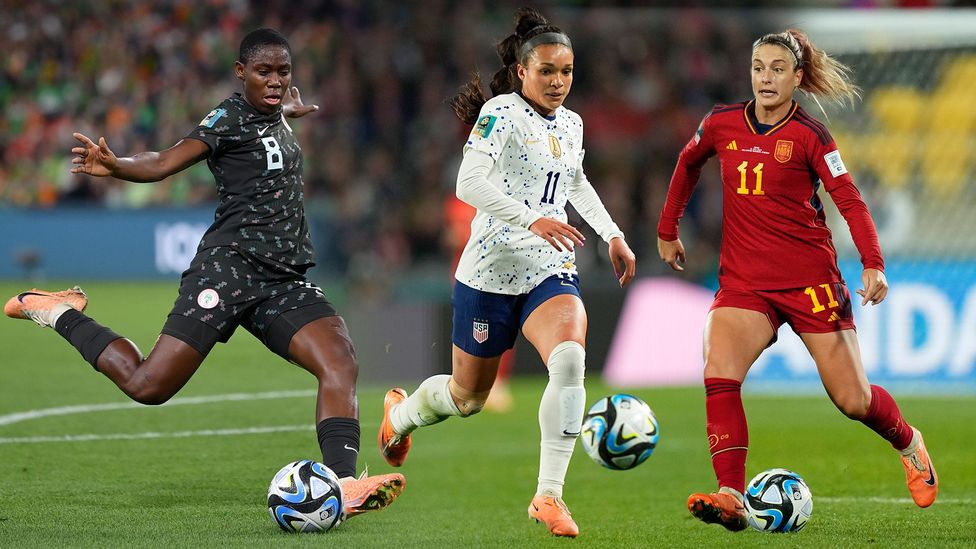
The women’s game is booming – and that’s reflected in the super-stylish and functional strips. It’s a far cry from what female players used to have to endure, writes Kesewaa Browne.
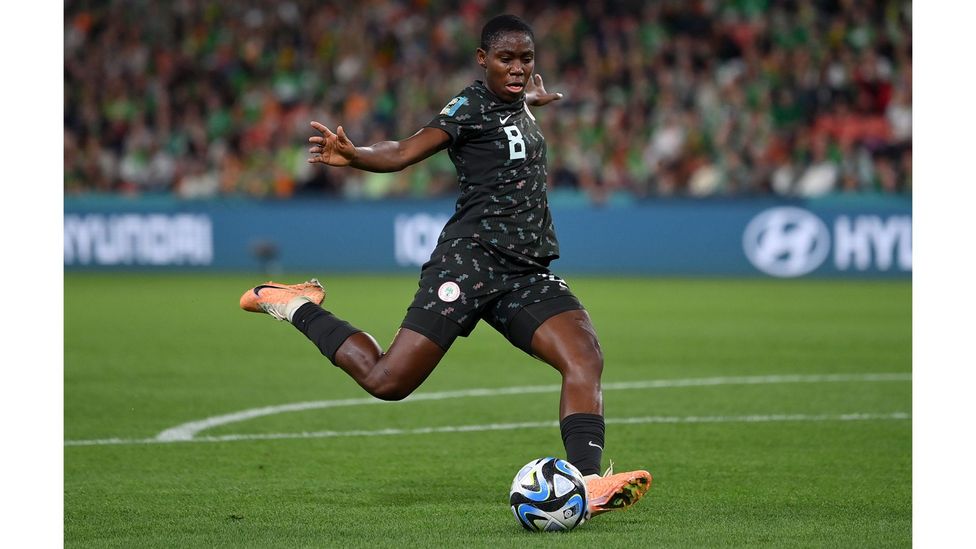
Nigeria’s Nike traditional print-inspired kit is among the many stylish national strips at this year’s Women’s World Cup (Credit: Getty Images)
It’s a far cry from the days when women didn’t even have kits of their own, and instead sported baggy attire on the pitch that was made for men’s bodies. And while football’s ties with fashion are established, with male footballers dabbling in modelling and building relationships with fashion houses, the fashion world is starting to call on female footballers too as the women’s game continues to skyrocket.
How early women footballers had to make do
In the UK, women’s football started to build momentum in the late 19th Century, following the country’s first recorded women’s match in 1881, with local clubs later starting to compete against each other. But its popularity really boomed during World War One. With millions of men away from home fighting, women took on traditionally male jobs working in the factories – and as a way for them to keep fit and build their stamina for heavy physical labour, sports such as football were encouraged. The most famous factory-based team was Dick, Kerr Ladies who notably drew a huge crowd of 53,000 spectators for a match against St Helens Ladies in December 1920.
But just as women’s football was growing in popularity, its momentum was halted in 1921, when the Football Association (FA) announced a ban on women playing the sport on professional grounds and pitches. The reason given: that football was unsuitable for women and not to be encouraged. The ban was not overturned until 1971, and for 50 years women were sidelined to playing in public parks – a stark contrast to the roaring stadiums they previously shined in.
“Football was an underground activity and that meant women who played during this period would wear or borrow male football gear,” says football historian Professor Jean Williams, author of A Game for Rough Girls: A History of Women’s Football in England. Naturally, this typically looked loose and baggy on them. And it wasn’t just in the UK where women’s football was stymied: during the 20th Century, bans and restrictions swept across the globe in countries including Brazil, Belgium, France, Nigeria and Norway. Even when bans subsided, bespoke kits for women were still a rarity well into the 21st Century. Just six years ago, the Irish women’s team threatened to strike due to being treated like “fifth-class citizens”: they alleged among other things that they were forced to change out of their clothes in public toilets to and from matches because they shared kit with the youth teams. For Dr Ali Bowes, a lecturer in the sociology of sport at Nottingham Trent University, the designing of bespoke kits represents a wider attitude change: “One of the biggest changes in recent years has been the shift to women’s football being seen as its own entity and not the hand-me-down version of men’s football,” quite literally, she says.
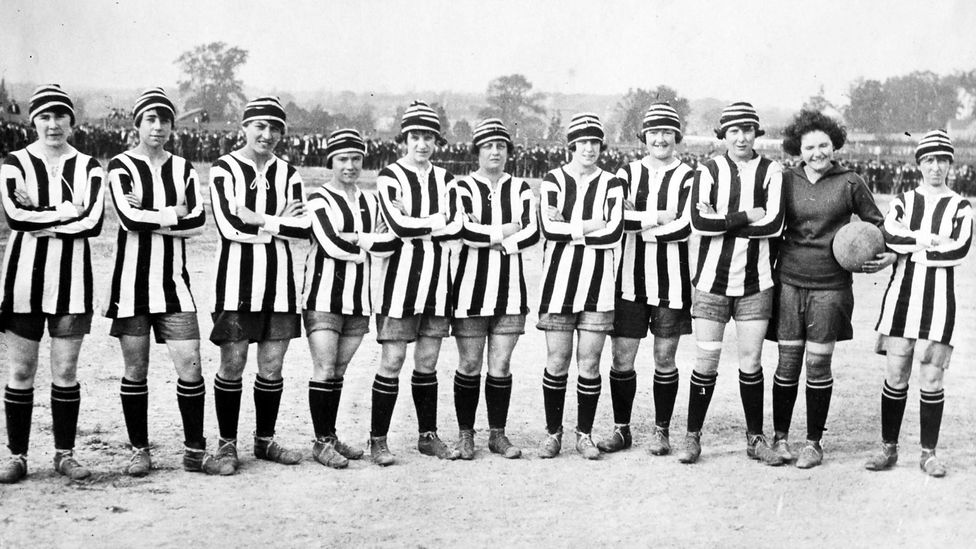
Dick Kerr, Ladies were one of the original women’s football teams, back in the 1920s (Credit: Alamy)
One key moment in the evolution of the women’s game was the 2019 Women’s World Cup in France. For the first time, sports manufacturers like Nike and Adidas designed bespoke, original kits for the teams they sponsored, with the teams themselves having an input in their creation. The corporations took many factors into consideration when creating female-friendly kits, including tailoring them for women’s bodies and making them compatible with ponytails, designing them to be easier to put on and take off. For the 2023 tournament, Adidas announced it was pledging its biggest-ever commitment to women’s football and it has kitted the players in each of the 10 national teams it has sponsored with bespoke individual sports bras. The fitted and technological attire seem miles apart from the billowing jerseys of the past.
Calling for change
For a long time, the poor kit options, combined with limited physical training and nutritional advice offered to female players, were “indicative of the lack of infrastructure and resource” that was given to women’s football, Williams says. By the same token, recent kit changes seen in women’s football are partially down to the players “standing up and fighting for what they deserve as elite performers”, Bowes says. Notably, this year England’s kits have swapped white shorts for blue after players had long expressed concerns to kit manufacturer Nike about wearing white while on their period. For Bowes, having kit designed for women’s athletes’ bodies is positive, but there “are still gaps, issues and challenges” to be dealt with, such as with football boots, which are generally designed with a man’s foot in mind, where women have higher arches and a different heel shape.
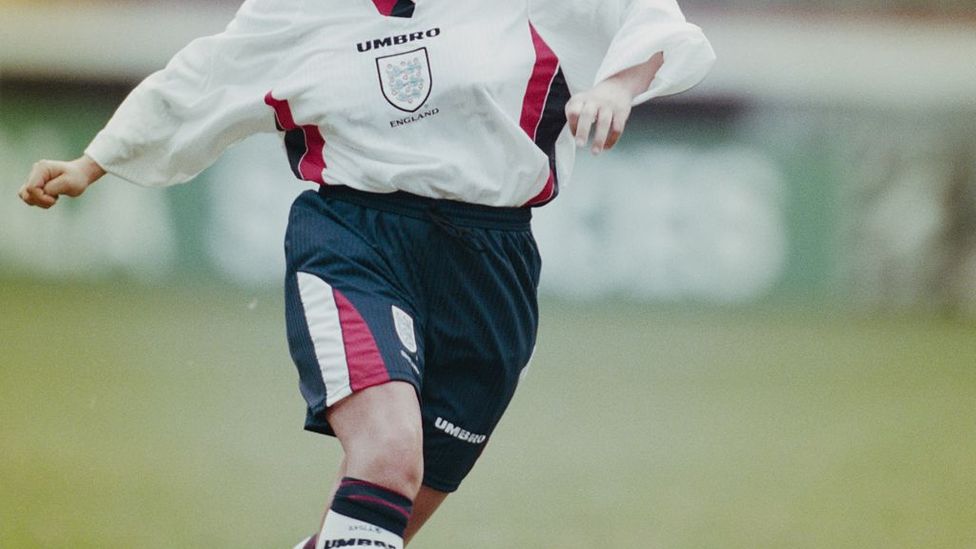
For a long while, female footballers were forced to wear kits designed for their male peers – and so many sizes too big (Credit: Getty Images)
What’s more, the increased visibility of women’s football has only strengthened fashion houses and designers’ interests in the beautiful game. Ahead of the tournament, Calvin Klein’s Calvins or Nothing underwear campaign welcomed women footballers into its hall of fame, with US Women’s National Team co-captain Alex Morgan, England’s super striker Chloe Kelly and Australia’s rising star Mary Fowler among the women players photographed for the iconic brand, joining male footballing peers like Romelu Lukaku and Son Heung-min. Fashion and football crossovers are “natural when you think about it”, says Williams. “[Football stars] make great models because not only are they are in great shape, but they are natural performers.” Elsewhere, England and Arsenal’s Leah Williamson made headlines last year after signing a lucrative modelling deal with Gucci.
Meanwhile the innovations in football wear doesn’t just stop on the pitch: British-Jamaican designer Martine Rose, who is no stranger to utilising a sporting aesthetic in her creations, recently launched a range of gender-free tailoring with Nike that according to the marketing “dissolves the boundaries of men and women’s football styling [to] evolve player suiting”. Indeed, Rose’s suits were worn by the US Women’s National Team when they stepped off the bus for their first match of the World Cup. It felt like a real turning point in women’s sport and fashion, the tailored suits being distinctively different from the sweats and tracksuits typically worn by teams ahead of matches. And when the collaboration officially launched, the models included Williamson, former England legend Rachel Yankey and players from the inaugural England Women’s football team of 1971.
What’s more, the influence of football’s aesthetic and culture has been visible in various labels’ catwalk looks: see for example, Balenciaga’s recent oversized football shirt, in collaboration with Adidas, and their football boot-looking trainers that premiered at Paris Fashion Week in 2020. For Felicia Pennant, founder of fashion and football online platform SEASON zine, “it’s extremely interesting when people in the fashion world look to football to draw out” inspiration. Football is a symbol “for community and designers are now putting their very own spin on this”, she adds.
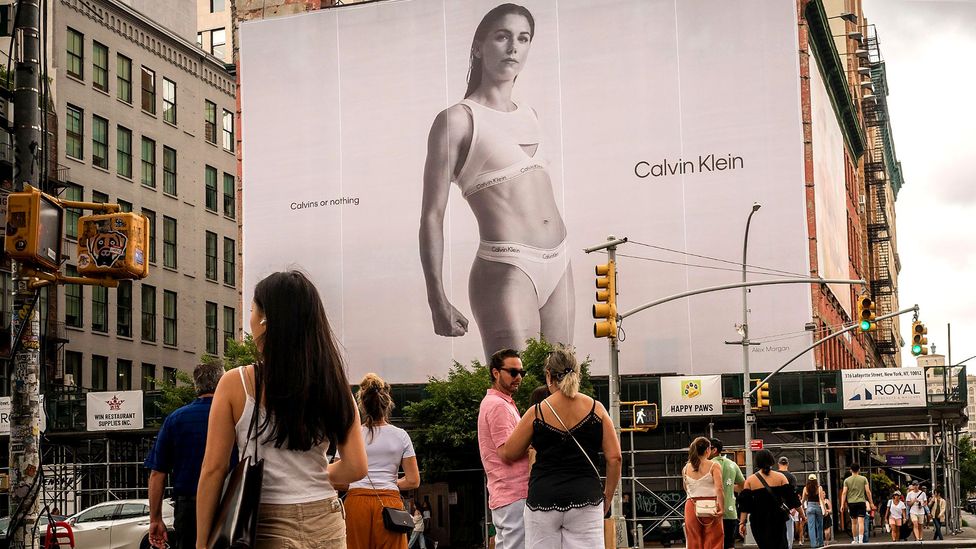
Alex Morgan is among the female football stars who have recently modelled for Calvin Klein (Credit: Alamy)
As to the future of women’s kit, Senior Director at Adidas Amy Charlton comments “there is no finish line, we continuously learn to use new technologies to make sure the next women’s world cup is even better”. And when it comes to the players, the stars of this World Cup are probably unknowingly making their mark and influencing the fashion world at this very moment.
If you would like to comment on this story or anything else you have seen on BBC Culture, head over to our Facebook page or message us on Twitter.
And if you liked this story, sign up for the weekly bbc.com features newsletter, called The Essential List. A handpicked selection of stories from BBC Future, Culture, Worklife and Travel, delivered to your inbox every Friday.
;





